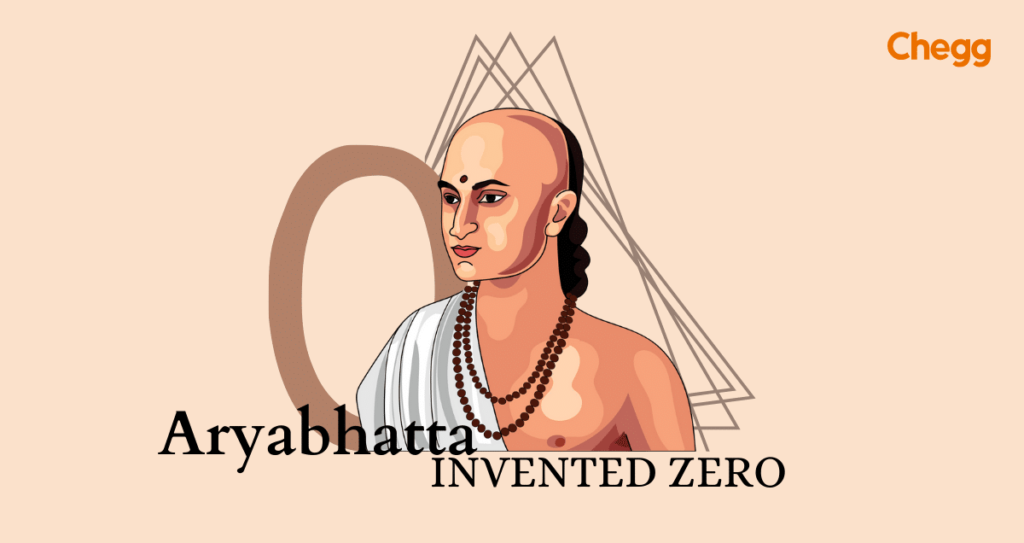Invention of zero: A Revolutionary Leap in Maths
Invention of zero
One of the most important turning points in the history of mathematics is the creation of zero. Both the notion and the digit zero have their roots in ancient cultures and have developed over ages. The invention of zero was first employed in writing in the third century BCE in ancient Mesopotamia, where it was a placeholder in the Babylonian number system.
Zero, however, was fully understood as a number in and of itself in ancient India.
In the seventh century CE, the mathematician Brahmagupta gave guidelines for arithmetic, including the invention of zero and negative numbers, in his book “Brahmasphutasiddhanta.” The decimal place-value system’s development was greatly aided by this invention.

Through translations of Arabic mathematical literature, the concept of zero emerged in India, traveled to the Islamic world, and eventually reached Europe. European mathematics underwent a revolution when 12th-century thinkers like Fibonacci started to employ zero.
Modern science and technology owe a great deal to the adoption and application of zero, which also made developments in algebra, calculus, and other mathematical sciences possible. As a fundamental component of advances in science and technology, the creation of zero not only revolutionized mathematics but also expanded our comprehension of the cosmos.
Please visit for such an interesting articles digiknowledge.co.in
John Michael Godier-science communicator
One of the biggest and most influential developments in mathematical history is the creation of zero. The transformation of zero from a simple placeholder to a potent mathematical idea is a fascinating tale that spans several centuries and cultures, according to renowned scientific communicator and author John Michael Godier.
This story emphasizes not only the intellectual prowess of ancient cultures but also the collaborative aspect of human progress.
Invention of zero from India: Zero as a Number
Zero became a number in and of itself in ancient India, moving beyond its use as a placeholder. Mathematicians like Aryabhata and later Brahmagupta played crucial roles in this enormous jump, which happened about the fifth century CE. The notion of zero was alluded to in Aryabhata’s works, but it was Brahmagupta who gave a formal definition and detailed its arithmetic features in his seminal book “Brahmasphutasiddhanta” in 628 CE.
Brahmagupta expounded on the principles of addition, subtraction, and the groundbreaking notion of division by zero when it came to operations involving zero.
First Steps: Using Zero as a Stand-In
The use of zero is thought to have begun in the third century BCE in ancient Mesopotamia. When a digit was missing from their base-60 number system, the Babylonians used this symbol to indicate it.
As evidence of the significance of positional notation, this symbol was essential for distinguishing between numbers like 60 and 600. Zero was just a placeholder, though, with no inherent worth in this situation.
The Zero Epidemic:Invention of zero– India to the Islamic World
The notion of zero has spread outside India. Through trade and intellectual contacts, it made its way westward to the Islamic world. Indian mathematical concepts were adopted and expanded upon by Islamic thinkers, especially in the Islamic Golden Age.
An important player in this process was the well-known Persian mathematician Al-Khwarizmi, who is frequently referred to as the father of algebra. Translations of his books into Arabic and then Latin helped spread the ideas of zero and the Indian numeric system throughout Europe.
Europe’s Zero: A Revolution in Mathematics
It was partly via the translations of Al-Khwarizmi’s writings that the idea of zero made its way to Europe by the 12th century. In his work “Liber Abaci,” Italian mathematician Fibonacci presented the Hindu-Arabic numeric system to a European audience, emphasizing the usefulness of using zero in computations. With its introduction, Europe saw the start of a mathematical revolution that led to important developments in a number of disciplines, including science, engineering, and business.
Beyond Mathematics: The Effect of Zero
The development of zero has far-reaching effects outside of mathematics. It made algebra, calculus, and other higher mathematics more easily developed. These subjects are essential to contemporary science and technology.
Since binary code, the language of computers, is based on the concepts of zero and one, zero also had a significant impact on the development of computing.
Zero’s entry into the philosophical and metaphysical discourse also had an impact on how researchers perceived the nature of voids and nothingness.
Conclusion
The importance of the invention of zero as a cooperative and cumulative feat of human cognition is highlighted by John Michael Godier’s thoughts on its creation. A prime example of how concepts change and expand over time and location is the trip taken by zero, which began as a placeholder in ancient Mesopotamia and is now a fundamental concept in modern mathematics.
This amazing tale not only demonstrates the inventiveness of prehistoric mathematicians but also serves as a poignant reminder of the interdependence of human knowledge and the never-ending pursuit of universe comprehension.
The force of human curiosity and the unwavering pursuit of knowledge are thus demonstrated by the invention of zero.
Who invented zero?
Zero’s definition, operations, and symbol development are attributed to the Indian mathematician and astronomer Brahmagupta. Another Indian mathematician and astronomer, Aryabhatta, is also frequently credited with creating zero and incorporating it into the decimal system.
How do different cultures represent zero?
Different civilizations have varied representations of zero:
Using two angled wedges, the Babylonians
Mayans: Made use of an eye-like figure
The open circle that is still in use today was written in Chinese.
Hindus represented 0 as a dot.
What was zero’s name in different languages?
Sunya, India
Mediterranean: Sifr Italy: Zefero
Zero in English




